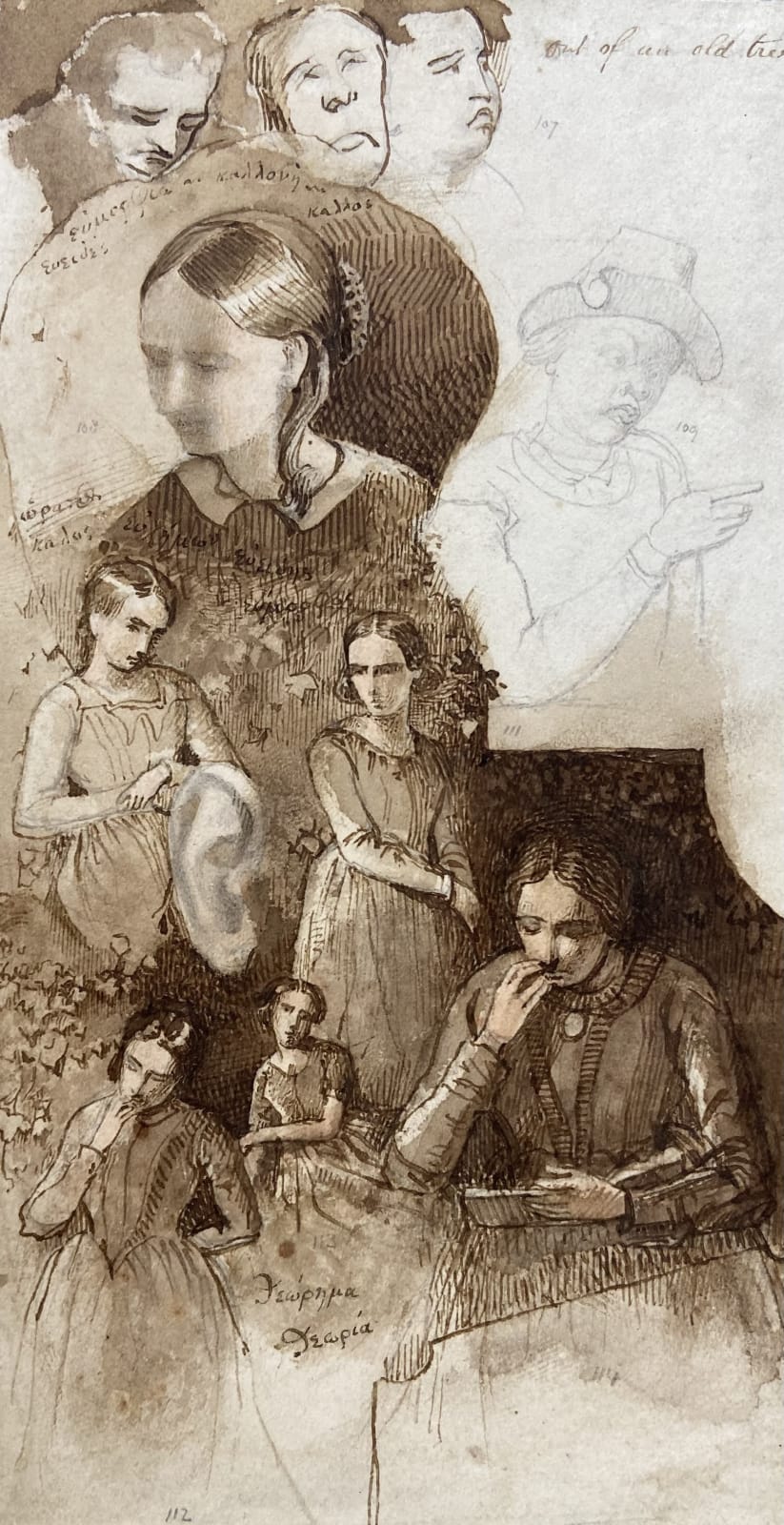James Smetham (1821-1889)
Provenance
The artist's family by descent
In 1869, Rossetti described his friend James Smetham as ‘a painter and designer of our own day who is, in many single respects, very closely akin to Blake; more so probably than any other living artist could be said to be. James Smetham’s work – generally of small or moderate size – ranges from Gospel subjects, of the subtlest imaginative and mental insight, and sometimes of the grandest colouring, through Old Testament compositions and through poetic and pastoral of every kind to a special imaginative form of landscape’ (Gilchrist, Life of Blake). Despite encouragement from Rossetti and John Ruskin, the artist was an isolated figure who achieved no popular success in his lifetime, which ended in disappointment, madness and melancholia.
Originally bound in a black lacquer album containing another 228 drawings and watercolours, this intimate medley of studies, thoughts and Greek phrases is a glimpse into the artist's inner world. Beneath the words for 'beauty', 'good' and 'well informed' are various studies of the artist's wife, Sarah Smetham (née Goble), who was a music teacher when they met at the Wesleyan Training College, Westminster.
